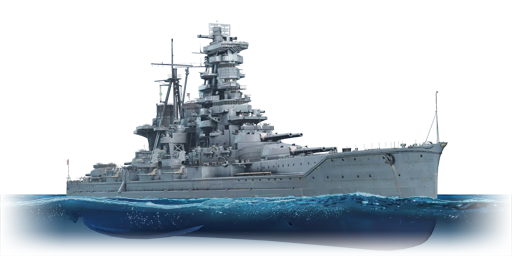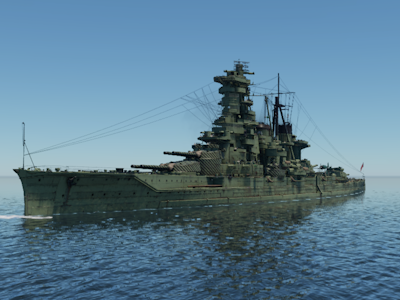The IJN Haruna (榛名, namesake: Mount Haruna) was the fourth and last Kongō-class battlecruiser (later classed as a fast-battleship by the IJN), being commissioned in 1915 on the same day as her sister ship, Kirishima. Participating in almost every major naval action in the Pacific conflict, she sailed with the southern fleet in preparation of the battle of Singapore, covered the Japanese landings in Malaya and the Dutch East Indies, engaged in the battle of Midway and fought in the Guadalcanal Campaign. From 1943 onward she would primarily move between bases as escort and cover for withdrawals and transfers. She would sink in the port of Kure Naval Base after several days of bombardment by Task Force 38 on 28 July 1945.
Haruna was introduced during Update "Danger Zone" as a reward for the 2022 Summer Quest event. Being in her last refit, she carries more anti-air 25 mm barrels than her sister Kongo, resulting in a larger volume of fire against mid-close range aerial attacks. Otherwise, Haruna offers decent mobility for the main armament she boasts at the cost of maximum armour; this speed can greatly enhance her effectiveness in Enduring Confrontation battles compared to other battleships.













